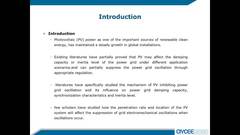Zheng Huiping
State Grid Shanxi Electric Power Company Power Research Institute
Zhen Tang
State Grid Shanxi Electric Power Company Power Research Institute
Jie Hao
State Grid Shanxi Electric Power Company Power Research Institute
hua chai
School of Electric power and Architecture Shanxi University
Yi Zhang
School of Electric Power Engineering Nanjing Institute of Technology
Mingxian Li
College of Electrical and Power Engineering China University of Mining and Technology
Zheng Huiping
State Grid Shanxi Electric Power Company
Power Research Institute


Comment submit